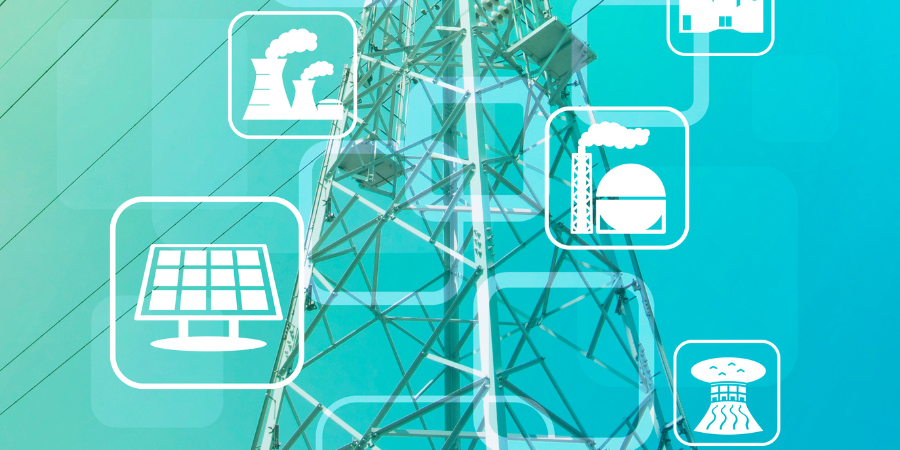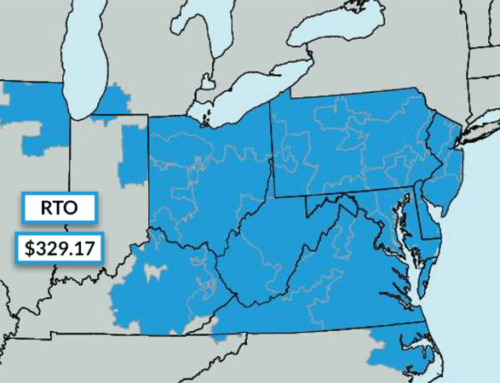The electric grid is a vast network of interconnected power generators, transmission operators, and local distribution companies. In the electrical system, power flows downstream from generators to consumers, and there are many complex components to ensure the reliable flow of energy. As renewable energy generation sources become more prevalent in the market, interconnecting these producers while ensuring a stable transmission network is at the forefront of every grid operator’s agenda. In this article, we will discuss the concept of grid interconnections, how power grids operate, and the challenge of introducing renewable energy into the existing infrastructure.
What Are Grid Interconnections?
Grid interconnections are system structures that allow electricity generators to feed power into the electrical system. At a national level, regional electricity grids are interconnected in an effort to wheel power to areas of high demand to further support system stability. Interconnection at its core is a central aspect of the power grid, allowing supply to meet demand at all times.
Types Of Grid Interconnections
There are several different types of interconnection structures used by grid operators and transmission owners alike. Let’s dive into these different structures in more detail below.
Local Grid Connections
At the local level, utility companies operate networks of distribution lines that carry power from grid substations to consumers. These systems often interconnect to micro-grid networks and behind-the-meter solar installations, offering reliability and additional energy supply at the local level.
Regional Interconnections
Regional interconnections include larger transmission networks such as the Eastern Interconnection, Western Interconnection, and ERCOT. These systems are a series of transmission networks that can span multiple states allowing power to be distributed regionally from many different generation stations.
National & International Interconnections
Cross-border connections, such as the Midcontinent Independent System Operator (MISO), span from the U.S. to Canada, making electricity transmission available to consumers in both countries. These systems are typically much larger and operate under several different jurisdictions and regulations.
How Much Does Grid Interconnection Cost?
Connecting generating assets to the electricity grid costs renewable energy developers fees that must be accounted for in their development costs. Smaller, behind-the-meter projects are subject to simple interconnection application fees, while larger-scale, grid-connected project fees are based on the total size of the power system.
Furthermore, developing new transmission lines can be quite expensive. Grid operators take these costs into account when setting interconnection fees for utility-grade renewable energy projects, as the introduction of new supply could generate a need to upgrade existing infrastructure. Transmission owners are allowed to recoup capital investments on a rate of return set by federal and local regulators. These transmission fees are ultimately paid by consumers in their total price for electricity.
Is Grid Interconnection Regulated?
Grid interconnection is heavily regulated by a combination of federal, regional, and state authorities. At the federal level, the Federal Energy Regulatory Commission (FERC) is responsible for overseeing the interstate transmission of electricity and setting guidelines for interconnection policies. FERC’s rulings often dictate how utilities must evaluate and approve new grid connections, particularly for large-scale energy generation projects.
Working alongside FERC is the North American Electric Reliability Corporation (NERC), which is tasked with developing and enforcing reliability standards across the entire power system. NERC’s regional affiliates coordinate with Regional Transmission Organizations (RTOs) and Independent System Operators (ISOs) to manage transmission system planning, grid balancing, and interconnection approvals. These RTOs and ISOs operate the grid on a day-to-day basis and are essential to maintaining consistent voltage, load balancing, and fair access to the grid for generating assets.
Grid Interconnection And Renewable Energy
Interconnection is a vital piece of renewable energy integration. As more and more renewable assets are developed across the U.S. the need to connect these systems efficiently to existing grid infrastructure becomes paramount. Due to the intermittent nature of variable renewable energy (VRE), it can be quite difficult to ensure a continual balance of supply and demand on the grid with the introduction of renewables. As system operators strive to achieve grid modernization through green energy sources, they are developing strict interconnection guidelines that regulate how and when these assets can go live. Some of these interconnection policies include following curtailment orders, do not exceed (DNE) protocol, and the need for solar clipping during periods of high grid congestion.
How Many Grid Interconnections Exist in the U.S.?
The United States power system is divided into three major grid interconnections, each operating largely independently to ensure regional reliability and balance between electricity supply and demand.
Eastern Interconnection
Covering the largest geographic area, the Eastern Interconnection spans the eastern two-thirds of the U.S. and parts of Canada. It includes major population centers such as New York City, Chicago, and Atlanta, and is operated by a network of RTOs and ISOs like PJM, MISO, and NYISO.
Western Interconnection
This grid system includes the western states, such as California, Arizona, and Colorado, and parts of Canada and Mexico. Managed in part by CAISO and other regional operators, the Western Interconnection is separated from the Eastern grid by limited DC ties and is governed by its own regulatory and reliability frameworks.
Texas Interconnection (ERCOT)
The Electric Reliability Council of Texas (ERCOT) operates nearly all of Texas’s electric grid independently of the Eastern and Western Interconnections. Due to this independence, ERCOT is largely exempt from federal regulation by FERC, making it a unique model in the U.S. grid landscape.
In addition to these three main interconnections, there are smaller, isolated grid systems such as those in Alaska and Hawaii, which are not connected to the mainland grid. These non-contiguous grids rely heavily on local generation resources and are increasingly investing in renewable energy and microgrid technologies to improve reliability and resilience.
Benefits of Grid Interconnections
Grid interconnections are the backbone of a reliable, flexible, and efficient power system. By linking multiple utilities and transmission systems, these interconnections offer a range of benefits that are essential to both grid operators and end users.
Power Reliability
Interconnected grids enable regions to share electricity resources by wheeling power. This significantly enhances grid resilience and reduces the risk of outages. When one area experiences a shortfall or system disruption, power can be rerouted from neighboring areas to maintain service continuity.
Load Balancing
Grid interconnections allow electricity to flow across state and regional boundaries, helping to meet peak demand during high-usage periods. This also enables efficient energy trading between utilities and suppliers.
Cost Efficiency
By tapping into lower-cost generation sources available across regions, utilities can reduce the need for expensive local generation. This access to a broader energy mix helps to lower wholesale electricity market prices and creates opportunities for more competitive retail energy supply contracts.
Renewables
Interconnections play a critical role in supporting variable renewable energy (VRE) sources like wind and solar. These resources are often location-dependent, but a more connected grid allows excess generation to be shared across regions, improving reliability and maximizing the value of renewable assets.
Challenges of Grid Interconnection
Some of the biggest challenges in grid interconnection include the patchwork of permitting requirements that vary by region. While FERC has jurisdiction over interstate transmission, state utility commissions still retain authority over siting and permitting for new transmission projects. This can lead to delays and conflicting regulations that make long-distance interconnection projects difficult to implement. Some other challenges include:
- Infrastructure Costs: Building new high-voltage transmission lines and upgrading substations for long-distance interconnection requires major capital investment. These costs can run into billions of dollars and are often passed on to ratepayers.
- Technical Compatibility: Synchronizing different grid systems requires sophisticated engineering and real-time coordination, which adds complexity to integration efforts.
- Cybersecurity Risks: A more connected, centralized grid increases the potential for cyber threats. Utilities and grid operators must invest heavily in cybersecurity infrastructure to safeguard critical systems and maintain reliability.
The Future of Grid Interconnections
As energy demands increase and the transition toward clean energy accelerates, the future of grid interconnections in the U.S. and across North America is focused on building a more integrated, flexible, and intelligent electricity system. One of the most ambitious visions is the development of a North American supergrid. This proposal is to build a massive interconnection linking the Eastern, Western, and Texas grids, along with Canada and Mexico. Such a system could facilitate large-scale renewable energy sharing across time zones. Some other future possibilities include:
Smart Grid
Continued investment in smart grid technologies, such as real-time energy monitoring, automation, and digital substations, will enable faster fault detection, dynamic load balancing, and greater efficiency in energy distribution.
Policy Changes
Regulatory reform is gaining momentum to streamline the permitting process and encourage new transmission development. Revisions to FERC rules, alongside proposed legislation at the state and federal levels, aim to accelerate grid expansion.
DERs
The growth of distributed energy resources (DERs), such as rooftop solar, on-site natural gas generation, and battery storage, is complementing traditional interconnection infrastructure. These decentralized solutions allow for greater energy flexibility at the local level while relieving demand on the central grid.
Interested In Learning More?
Understanding how grid infrastructure works and how it affects electricity prices is critical for businesses and energy users alike. From permitting challenges to regional policy shifts, staying informed empowers stakeholders to make smarter energy decisions. At Diversegy, our team of energy experts is at the forefront of cutting-edge transmission and distribution technologies. We help our clients navigate the complexities of the power grid in an effort to reduce energy costs. Contact us today to learn more.



